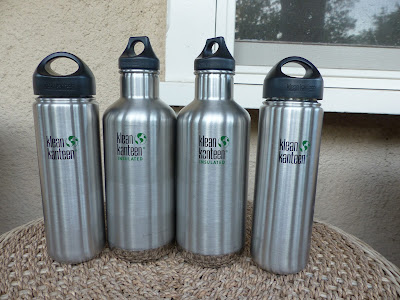Trying to re-purpose something we already had, I remembered I had a bunch of calico bags that came as shoe bags for various shoes I'd bought over the years. Never having used these bags, I'd stashed them away thinking they might come in handy. Bingo! A perfect project for the next sewing day with my crafty friend. I look forward to these sewing afternoons - apart from being a great excuse to catch up, they ensure that planned sewing jobs actually get done. Like ironing board covers and pillowcase repairs :) Plus two minds are better than one (well mine at least!) when it comes to working out the best way to tackle a sewing project.
My destined-to-be produce bags had a single handle and looked like this:
To make them more suitable for carrying produce without spillage I decided to add a drawstring opening. I had a small collection of salvaged ribbon and cloth tape, and fortunately there were a few pieces of suitable length for the job. I simply folded the top edge of the bag over and sewed along the bottom to make a casing for the ribbon, leaving one side open so the ribbon could be threaded through.
In order to make the casing and keep the handles, the handles were folded back and sewn over when the casing was made.
By a crazy coincidence, my friend's plan for the day was to make cotton drawstring bags to use to store different varieties of potatoes in her pantry. So it became a produce bag making day - talk about being on the same wavelength!
We had a break for lunch - yummy black bean soup and homemade bread:
Then it was back into it and before too long I had a set of produce bags - 4 large and 1 small.
The last step was to weigh each bag and write the weight on the bag itself with a waterproof texta. That way the weight of the bag can be deducted from the total weight at the checkout. Armed with these reusable bags and my Onya mesh bags we are now ready to shop more sustainably.















